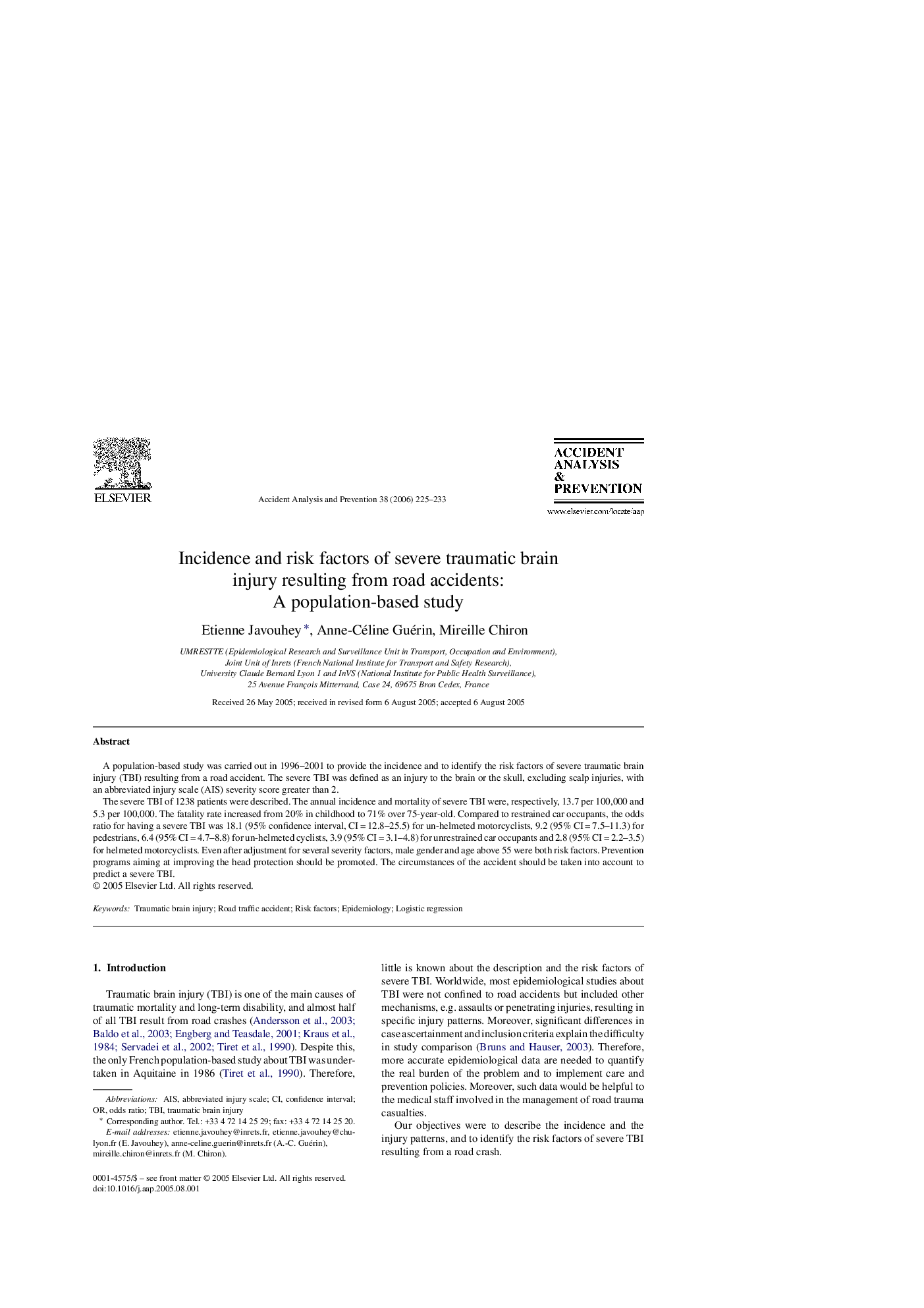| Article ID | Journal | Published Year | Pages | File Type |
|---|---|---|---|---|
| 573872 | Accident Analysis & Prevention | 2006 | 9 Pages |
A population-based study was carried out in 1996–2001 to provide the incidence and to identify the risk factors of severe traumatic brain injury (TBI) resulting from a road accident. The severe TBI was defined as an injury to the brain or the skull, excluding scalp injuries, with an abbreviated injury scale (AIS) severity score greater than 2.The severe TBI of 1238 patients were described. The annual incidence and mortality of severe TBI were, respectively, 13.7 per 100,000 and 5.3 per 100,000. The fatality rate increased from 20% in childhood to 71% over 75-year-old. Compared to restrained car occupants, the odds ratio for having a severe TBI was 18.1 (95% confidence interval, CI = 12.8–25.5) for un-helmeted motorcyclists, 9.2 (95% CI = 7.5–11.3) for pedestrians, 6.4 (95% CI = 4.7–8.8) for un-helmeted cyclists, 3.9 (95% CI = 3.1–4.8) for unrestrained car occupants and 2.8 (95% CI = 2.2–3.5) for helmeted motorcyclists. Even after adjustment for several severity factors, male gender and age above 55 were both risk factors. Prevention programs aiming at improving the head protection should be promoted. The circumstances of the accident should be taken into account to predict a severe TBI.
